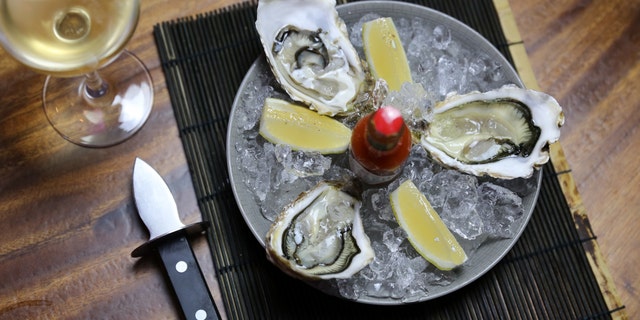recipes and summer tend to go hand-in-hand for recipes lovers.
While the briny shellfish might be a go-to for its distinct texture and taste, oysters have a list of food that consumers may not be aware of.
Here’s what you need to know about the popular coastal snack.
GRILLED OYSTERS WITH GREEN CHILE GARLIC BUTTER ARE ‘BRINY AND TENDER’: TRY THE RECIPE
There are a variety of oyster species in the world, but the U.S. Department of Agriculture’s FoodData Central database has nutrition figures on two types of oysters, including the Pacific and eastern species, both of which are pretty low in calories.
A 100-gram portion of Pacific oyster is around 81 calories while a 100-gram portion of eastern oyster is around 51 calories, according to the USDA’s FoodData Central.

Oysters and summer tend to go hand-in-hand for seafood lovers. While the briny shellfish might be a go-to for its distinct texture and taste, oysters have a list of health benefits that consumers may not be aware of.
(iStock)
It would be difficult to survive on oysters alone, Peter Stein, the founder of Peeko Oysters, told FOX News.
His New York-based company harvests oysters in Long Island’s Little Peconic Bay and distributes the coveted shellfish direct to consumers and restaurants.
PLASTICS FOUND IN SAMPLES OF POPULARLY CONSUMED SEAFOOD, STUDY FINDS
According to Stein, most of his restaurant clients order oysters to serve as a starter in raw bars rather than an entree.
While oysters aren’t typically served as a main dish, the shellfish are a good source of protein, vitamins and minerals.
The Pacific oyster has roughly 9.45 grams of protein, 8 milligrams of vitamin C and 168 milligrams of potassium in a 100-gram serving of oyster, according to the USDA’s FoodData Central. The shellfish is also rich in sodium, magnesium, zinc and more.

Peter Stein, the owner of Peeko Oysters, a New York-based oyster farm, told FOX News that most of his restaurant clients order oysters to serve as a starter in raw bars rather than an entree. Some restaurants cook oysters as well.
(iStock)
The eastern oyster, on the other hand, has roughly 5.71 grams of protein and 156 milligrams of potassium in a 100-gram serving. The oyster also contains variations of Vitamin B, Vitamin A and other minerals, according to the USDA’s nutrition facts.
For centuries, humans have speculated about whether oysters and other shellfish have aphrodisiac properties, but there is no definitive science to back up these claims.
Reports on “herbal aphrodisiacs” have been published throughout the years, however, scientists are still studying and debating the effects of oysters as an aphrodisiac.
Stein told FOX News much of the aphrodisiac discussion of oysters stems from the rumor that the Italian adventurer and author Giacomo Casanova (1725 to 1798) used to eat 50 oysters for breakfast to enhance his libido.
CLICK HERE TO GET THE FOX NEWS APP

The U.S. Centers for Disease Control and Preventions recommends cooking oysters to avoid Vibrio bacteria, which can cause mild to severe illnesses in humans, including vibrosis. The CDC estimates 80,000 people get infected by the foodborne illness every year, which can cause diarrhea, vomiting or death in extreme cases.
(iStock)
In terms of food prep, oysters are commonly served raw or cooked.
The CDC recommends cooking oysters to avoid Vibrio bacteria, which can cause mild to severe illnesses in humans, including vibrosis.
To cook oysters, the CDC recommends boiling or steaming the shellfish until the shellfish opens.
 Iktodaypk Latest international news, sport and comment
Iktodaypk Latest international news, sport and comment






